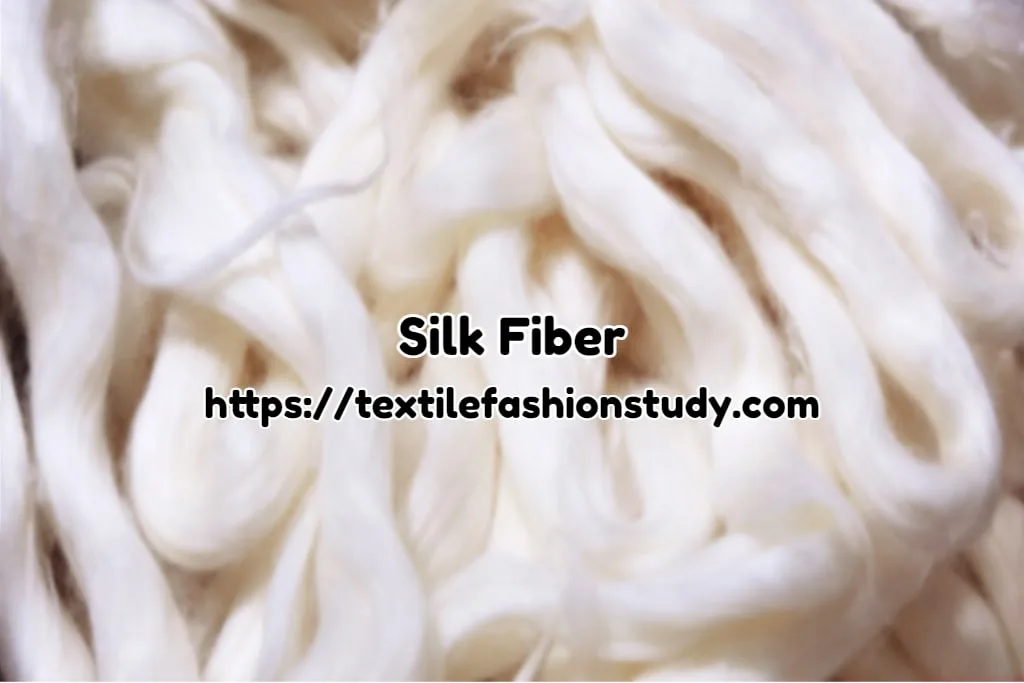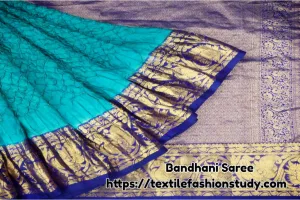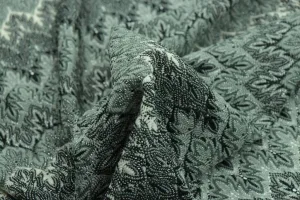Table of Contents
Silk Fiber
Silk is a natural textile fiber and this fiber is famous for its lustrous appearance, softness, and strength. However, it collects from an insect named silkworm. The silkworm is the caterpillar of a small, off-white moth belonging to the species Bombyx mori. The thread collects from the insects that require treatment before fabric production. Raw silk contains different types of impurities, which need to be removed before textile processing.

Figure: The chemical structure of Silk Fiber
From the above chemical structure, it is clear that the two types of proteins are contained in the silk fiber collected from silkworms. Therefore, two proteins are fibroin and sericin. The silk fiber composition mainly consists of a protein called fibroin that makes up approximately 75–90% of the fiber’s weight. Fibroin is the structural center of the silk fiber; on the other hand, sericin is the sticky material surrounding it. Besides this, fibroin composites of the amino acids Gly-Ser-Gly-Ala-Gly-Ala form beta-pleated sheets, β-keratin”. At the same time, hydrogen bonds form between chains and side chains from above and below the plane of the hydrogen bond network. R = H, glycine; R = CH3, alanine; and R = CH2OH, serine.
Chemical Composition of Silk Fiber:
The silk fiber contains various types of chemical components in the chemical structure. The following is the chemical composition of raw silk fiber. They are-
- Fibroin: Fibroin is a complex protein made up of long chains of amino acids including glycine, alanine, and serine. When organized in a certain repeating pattern, these amino acids give silk its distinguishing characteristics. In essence, several chemical connections, such as hydrogen bonds, van der Waals forces, and disulfide bridges, aid in keeping fibroin protein chains bound together. Fibroin is approx 75% of silk construction.
- Ash of Silk Fibroin: Silk fiber contains a small amount of ash of silk fibroin. The amount of ash of silk fibroin is 0.5%.
- Sericin: Small quantities of sericin, which function like glue to hold the fibroin fibers together in the silk cocoon, are also found in silk fibers. Sericin makes up between 10% and 25% of the structure of silk and is what gives raw silk its slightly coarse feel. Sericin is approximately 22.5% of the silk construction.
- Fat and Wax: The amount of fat and wax contain in silk fiber is 1.5%.
- Mineral Salt: Silk fiber also contains small amounts of mineral salt such as calcium, potassium, and iron. The amount is approx 0.5% of the silk weight.
This silk construction calculates at 100 percent.
It is important to know that fibroin is composed of 16 various amino acids. Raw Silk is composed of two filaments, which are produced by the fibroin. These two filaments are adjusted by the gum known as sericin and different types of mineral salt, fat, and wax are also involved with it.
This raw silk is treated to remove the gummy materials and various types of impurities from the silk by scouring process. Then the silk fiber is collected and used to produce silk fabric through the weaving process.

Features of Silk Fiber
There are some properties of silk fiber. The following are the characteristics of silk fiber. They are-
- Firstly, silk is a natural protein fiber.
- Secondly, it collects from insects the species Bombyx mori.
- Thirdly, it shows excellent fiber characteristics such as a high degree of luster, drape, soft feel and touch, and elongation properties.
- Then, the production of silk fiber requires massive labor engagement, and as a result, it helps generate huge employment.
- Silk calls as the queen of all fibers because of its natural sheen, dyeing affinity, moisture-absorbing capability, and low specific gravity.
- After that, this fiber is a very expensive fiber when it contributes only 0.2 % of world textile production.
- Lastly, silk is popular for its excellent physical and chemical properties.
Fibroin and Sericin make up the majority of the silk fiber, to summarize. These elements work together to give silk its desired properties, such as its strength, smoothness, and capacity to reflect light.
So, that’s all about the chemical compositions along with the features of silk fiber. Moreover, the demand for silk fiber products is increasing day by day.






2 comments
Paras
Please give me more information in Hindi
faustina paul
helpful resource 🙂